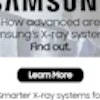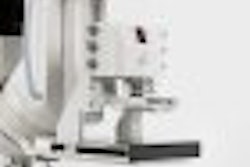Sometimes it takes a little extra time to get the job done right. That seems to be the message from a new study analyzing the relationship between digital radiography (DR) retake rates and image quality -- researchers found that the radiologic technologists with the highest retake rates also produced the best images.
With the exception of mammography, there are few set standards for quality assurance (QA) in radiography -- a discrepancy that can create marked disparity in clinical outcomes. In addition, the current practice of "self-directed" QA by technologists is often insufficient in explaining and justifying retake/reject rates.
In an effort to better understand the factors that influence QA in chest radiography, researchers from the VA Maryland Health Care System and Rochester General Hospital in Rochester, NY, are involved in an ongoing multi-institutional, longitudinal study of the relationship between technologist retake rates and perceived DR image quality. Initial results from the study, which is being supported by a research grant from Eastman Kodak Health Group of Rochester, NY, were presented by Dr. Eliot Siegel of the Maryland VA at the RSNA meeting in Chicago last month.
“Technologists in general believe that CR and DR are more forgiving than film because of wider exposure latitude and greater dynamic range,” Siegel said. “But the reality of QA for DR in 2006 is that there has been very minimal research, limited product development, relatively limited standards, and not much in the way of QA data collection. Also, it is not clear if DR has resulted in significant improvement in retake rates compared to film.”
The researchers retrospectively created a digital chest radiography QA database from 1,000 random chest x-ray exams (half portable, half in-department), comprising 850 "accepted" and 150 "rejected" images. These 1,000 images were independently reviewed by 10 board-certified radiologists, who were unaware of the initial QA status.
Reviewers were asked to rate the overall quality of each image using RadLex criteria (nondiagnostic, limited, diagnostic, and exemplary), and to give their opinion as to whether the exam should be accepted or rejected for interpretation. Fourteen technologists were included in the study, and retake rates were calculated for each exam type and each technologist. Factors that were studied included technologist variability, radiologist variability, economic ramifications, and operational efficiency.
The study revealed a "statistically significant" correlation between technologist retake rates and image-quality ratings as perceived by radiologists for both erect and portable chest images, according to Siegel. An unexpectedly high difference (ninefold) in retake rates was observed when comparing in-department portable chest x-rays, the latter of which were rarely retaken.
The researchers found a 15-fold difference between technologists with the highest and lowest retake rates, with retake rates ranging from 0.57% to 8.52%. Technologists with higher retake rates had the highest image-quality scores, while technologists who took fewer retakes had the lowest image-quality scores. For erect chest radiographs, the ratio of poor image quality (defined as nondiagnostic or limited QA ratings) to high image quality (defined as diagnostic or exemplary QA ratings) was 36% to 64% for technologists with fewer retakes, compared with a ratio of 14% to 86% for technologists who took more retakes.
The difference in quality narrowed with respect to portable chest radiographs. Portable x-ray studies were generally perceived as having lower image-quality ratings, with a narrower range of poor to high image-quality scores. RTs with low retake rates had 43% of their images rated as low quality and 57% as high quality, while RTs with high retake rates still produced 32% of images rated as low quality while 68% were scored as high quality.
Technologists and radiologists were shown to disagree on the decision to accept or reject the image in 14% of cases. In fact, 88% of the studies rejected by technologists were rated as limited or better by the radiologists.
"In the current system of 'self-directed' QA, technologists with higher retake rates were perceived to perform higher image-quality chest radiographic images than their low-retake-rate technologist counterparts," Siegel said. "This illustrates the limitations and inefficiencies of current practice, and underscores the need to standardize and objectify digital radiography QA."
He suggested several possible scenarios for changing the current QA process, notably reorganizing the radiology department to incorporate a central QA technologist, incorporating more external image review, and providing increased educational opportunities for technologists.
By Kathy Kincade
AuntMinnie.com contributing writer
December 15, 2006
Related Reading
Study: DR delivers lower radiation dose, November 17, 2006
U.S. hospitals find ways to take the digital x-ray plunge, October 12, 2006
Digital radiography slowly, but surely, makes its mark, July 25, 2006
Copyright © 2006 AuntMinnie.com



















